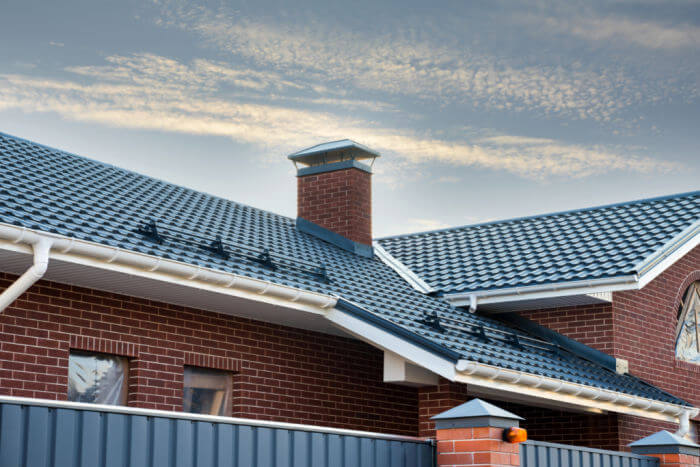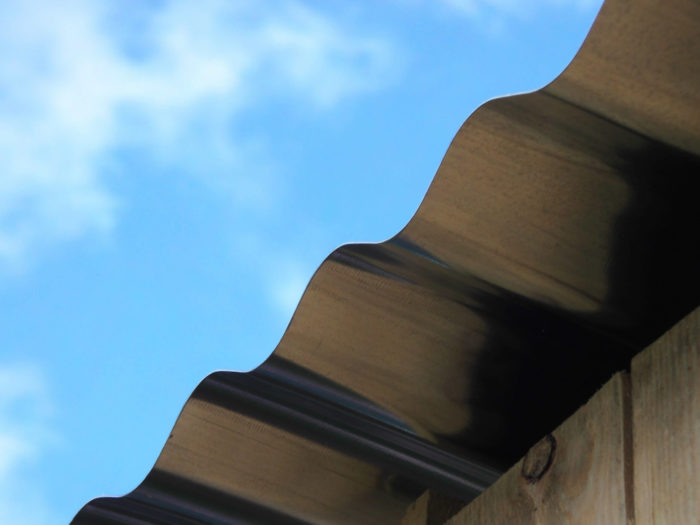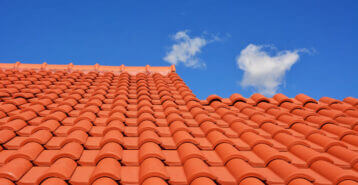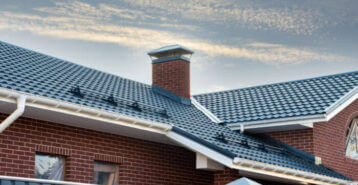Are you doing a roofing project?
Modernize can pair you with three to four pros in your area, so you can compare options and save time and money.
Roof damage can come in many forms, but even the smallest issue can become a costly headache if left unrepaired. According to experts in the home roofing industry, it’s important to invest in durable roofing materials that protect your home against severe weather in your area, in addition to regularly maintaning your roof, to avoid costly roof repairs for the long-term. On this page, you’ll learn some effective ways you can protect your home from roof damage, the best damage-resistant roof materials to invest in, and the best next steps you can take to avoid costly repairs through your roof’s lifespan.
10 Best Ways to Avoid Roof Damage
The best way to protect your roof from damage is choosing the right materials, and staying on top of regular maintenance.
Below you will find the most common forms of roof damage, and what proactive steps to take to prevent these issues on your roof.
1. Repair Missing Shingles
Cracked, bent, and missing shingles all provide an opportunity for leaks and water damage. You might see this manifested as shingle debris in your yard, driveway, or downspout splash blocks.

If you know a little bit about home repair and feel comfortable walking on your roof, you should be able to repair a missing shingle by yourself. A cracked shingle can be repaired using a little bit of roof sealant squeezed into the opening.
If part of the shingle is missing, you’ll need to use a hammer to remove the nails, and then a pry bar to pull up the shingle itself. Then take a utility knife and cut the shingle free. Slip the new shingle into place, and nail it down with four fasteners. Keep in mind that each nail hole presents an opportunity for water to find its way into your home, so you want to ensure each nail is necessary and also properly placed.
Sounds too complicated? A roofing professional can make the repair for you.
2. Maintain Gutters
Water can be detrimental to many parts of your home, and the roof is no exception. A working gutter system is one of the best ways to help move water off your roof and away from your home’s foundation.
In order to keep gutters functioning at their best, regular maintenance and upkeep are required. If you do not clean gutters properly, they will eventually clog, causing water to flow over the top of them and onto your home. This can cause roof damage and indoor leaking.
For most homes, a twice-yearly cleaning of gutters and downspouts will do — once near the end of spring, and again as fall draws to a close and the leaves have fallen. These are the typical times when clogs occur and when you can do the most good for your home’s gutters. However, if you live in a particularly wooded area, a more frequent check for debris is advised. It is also recommended that you prep your gutter system before any anticipated heavy rainfall or storms.
You can also install gutter guards. These mesh, foam, or vinyl protectors are typically installed on top of gutters to allow water to freely flow through while blocking debris from getting inside.
3. Address Roof Ponding
If you notice pools of water standing on your roof after it rains, you want to resolve the issue quickly before it causes major roof damage. This accumulated water is called ponding. It leaves your roof vulnerable to rot, which in turn can cause all kinds of issues, including leaks and water damage. Flat and low-sloped roofs are more prone to this problem than steeply-pitched surfaces—but it can happen anywhere.
If you see ponding on your roof, call a local roofing professional as soon as you can.
4. Prevent Wind Damage
Heavy rainfall isn’t the only thing that storms can bring—they can also bring heavy winds. High wind speeds have the potential to knock over trees, shatter windows, and cause roof damage. If shingles are blown away, the roof deck or underlayment is left exposed to the elements. This leaves your home even more vulnerable to water damage.
After a heavy wind storm, be sure to inspect your roof for the following damage:
- Damage dependent on roof type:
- All Shingle Roofs: Missing, cracked, or curling shingles
- Composition Shingles: Granule buildup in gutters
- Wood Shingles or Shakes: Rotting and mold
- Flat Roofs: Cracks, tears, or surface bubbles/wrinkles
- Damage to roof support or accents:
- Flashing: Tears or buckling
- Roofing Cement: Loose or crumbling cement
- Gutters and Downspout: Rust, rot, or missing and dented sections
- Chimneys: Loose or crumbling brick
If you notice any of the above damage, addressing it quickly can help prevent the problem worsening and also the likelihood of future problems.
For those with shingled roofs, explore adding roofing cement underneath shingle tabs that might be loose or have a tendency to pop up. You can also install starter shingles along the eaves. These shingles are designed to resist extreme wind and offer your roof some added protection during storms.
Find the Right Contractor for Your Roofing Project
Whether you’re ready to begin your project now or need some expert advice, our network of contractors are here to help. With a few simple questions, we’ll find the best local professionals for you
5. Prevent Snow and Ice Damage
For homeowners living in cooler climates, snow and ice can be a major cause of roof damage. Of primary concern are ice dams. An ice dam is a section of ice that forms on a roof and prevents melting snow from draining properly. This water backs up, putting stress on the roof and potentially leaking into your home.

There are a few simple tricks to handle snow build-ups and to prevent it from happening:
- Roof rakes. These tools allow you to safely pull snow from your roof onto the ground.
- Ventilation. Attic ventilation allows for proper air circulation from the soffit (see above image) to the roof peak, which helps to prevent and alleviate ice dams.
- Insulation. This will help prevent rising heat from heating and melting snow on the roof. If the snow melts while the weather is still freezing, all that melted snow will just re-freeze, which is a major cause of ice dams forming in the first place.
6. Landscape for Storm Preparation
Trees provide homeowners with several benefits—including energy savings and boosts to curb appeal. However, they can present risks during storms and should be properly maintained.
Of primary concern are tree branches hanging over your home. Branches are susceptible to snapping and falling during high winds or heavy rain or snow. A falling branch will not only cause roof damage but can present life-threatening scenarios. Having trees around your home trimmed before storm season(s) in your area is an important step to protecting your family and home.
Additionally, you should cut back branches that hang over utility lines or pose threats to windows. This is also a great opportunity to address any dead trees that might be at risk of falling. Spot a dead tree by looking for discolored leaves, cracks in the bark, branches with no growth, or branches that easily snap.
7. Protect Against Sun Damage
Roofing materials are designed to withstand the effects of direct sunlight, but over time they give way to wear and tear. You should regularly inspect your roof for sun-related roof damage like chipping, fading, warping, or other irregularities. Unfortunately, sometimes it can be difficult to spot these problems—meaning it’s a good idea to hire a professional to inspect.
Certain roof materials are more sun-resistant than others, so if you’re exploring a roof repair or replacement and live in a sunny area, consult a professional to determine what sun-resistant options might be available.
8. Inspect Your Home’s Attic
When it comes to protecting your home from roof damage, it isn’t just the exterior you should be inspecting—your home’s attic is a great place to start to mitigate issues. Holes or cracks in your roof can lead to water damage and spread to other areas of the roof—as well as your home.
A simple way to check for this kind of roof damage is to go into your attic on a bright day, leave the light off, and see if there are any spots where outside light is filtering into the space. If light is getting inside, water and pests can as well.
Another thing you can do is inspect for stains and/or discoloration on rafters, plywood, or attic floor beams. Damage to insulation is also a sign that there is water leakage occurring during rainstorms.
9. Insulate Your Roof
Ensuring your attic is properly insulated isn’t only a great way to save on utility costs, but it can also help protect the roof. How so, you might ask? Condensation from inside your home can develop in your attic, which can lead to damage to roof beams, joists, and supports. Adding or replacing insulation can help reduce this condensation and protect roof elements from rot and other damage.
10. Inspect for Pests
An attic should be a warm and dry area of every home—which is great for homeowners, but also ideal for animals like mice, squirrels, and raccoons. Beyond an inconvenience, animals can cause damage to wiring, HVAC systems, pipes, and more—all of which can impact your home’s roof. Not to mention they can carry fleas or diseases.
If you notice droppings, nests, signs of gnawing, squeaks and scurrying sounds, or unusual insulation damage, you might have an animal in your attic.
Typically, removing an animal from your attic should only be handled by a professional, but there are actions you can take to prevent them from entering your home in the first place:
- Monthly inspections are a great opportunity to look for any potential entry points that need to be repaired.
- Trim branches near your home that can be used by raccoons or squirrels to climb and gain home entry.
- Ensure any vents in your attic are properly covered.
- If your home has a chimney, consider installing a chimney cap.
Impact-Resistant Roofing
Another effective option for avoiding roof damage is installing impact-resistant roofing. Installing impact-resistant roofing like class-4 impact-resistant shingles are the best choice for homeowners who live in areas that frequently experience high wind, rainfall, hail, tornadoes and more.
The best way to decide if impact-resistant shingles are right for you is consult with a local roofing contractor, as well as with your insurance carrier to see if they offer discounts for this roofing upgrade.
Find the Right Contractor for Your Roofing Project
Whether you’re ready to begin your project now or need some expert advice, our network of contractors are here to help. With a few simple questions, we’ll find the best local professionals for you
Reviews from Real Homeowners
Welcome to Homeowner Resources! We are the Modernize blog. Modernize pairs more than 3 million homeowners a year with pre-vetted contractors in their area. This blog started because we believe homeowners should know everything about their homes, from how their HVAC works to which front door colors they might love. On Homeowner Resources, you can find information on every part of your home, right down to how you can negotiate with contractors to get the best price. Here's more about the blog.
Need a contractor? Learn more about how Modernize finds the right pro for you.






